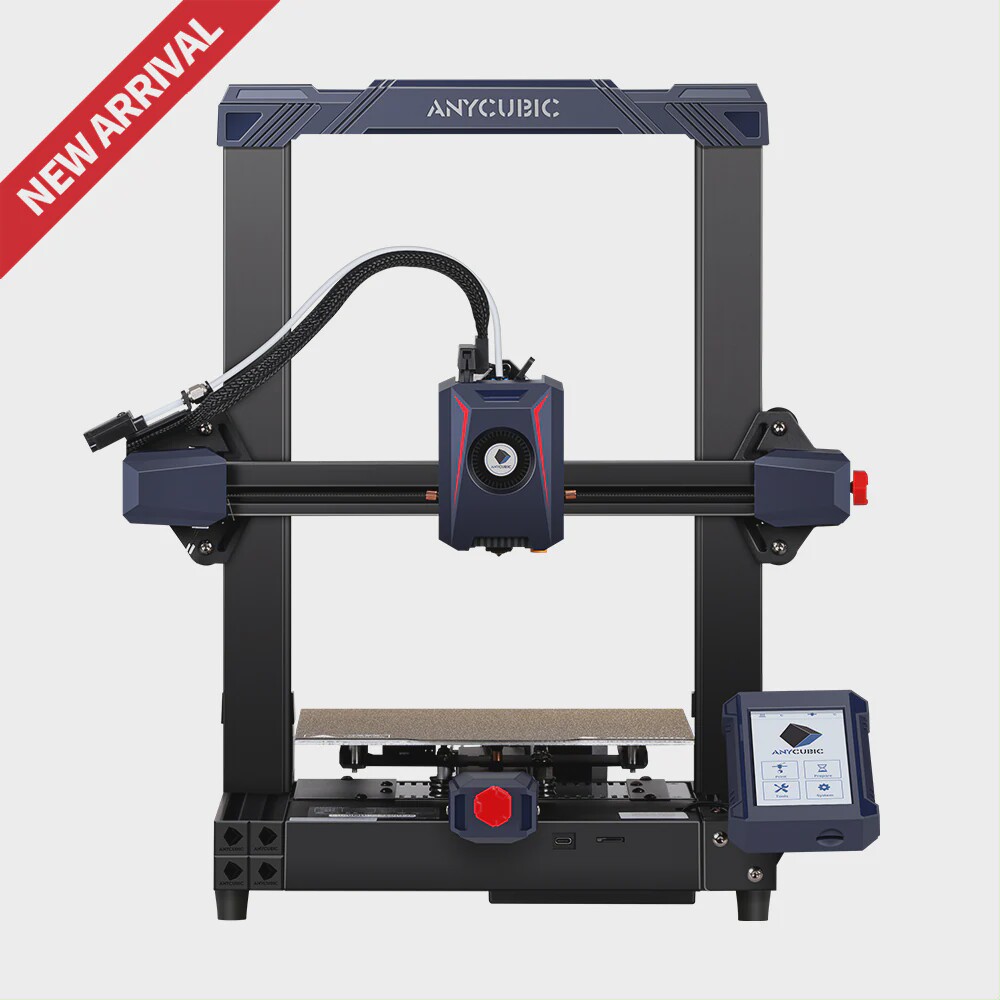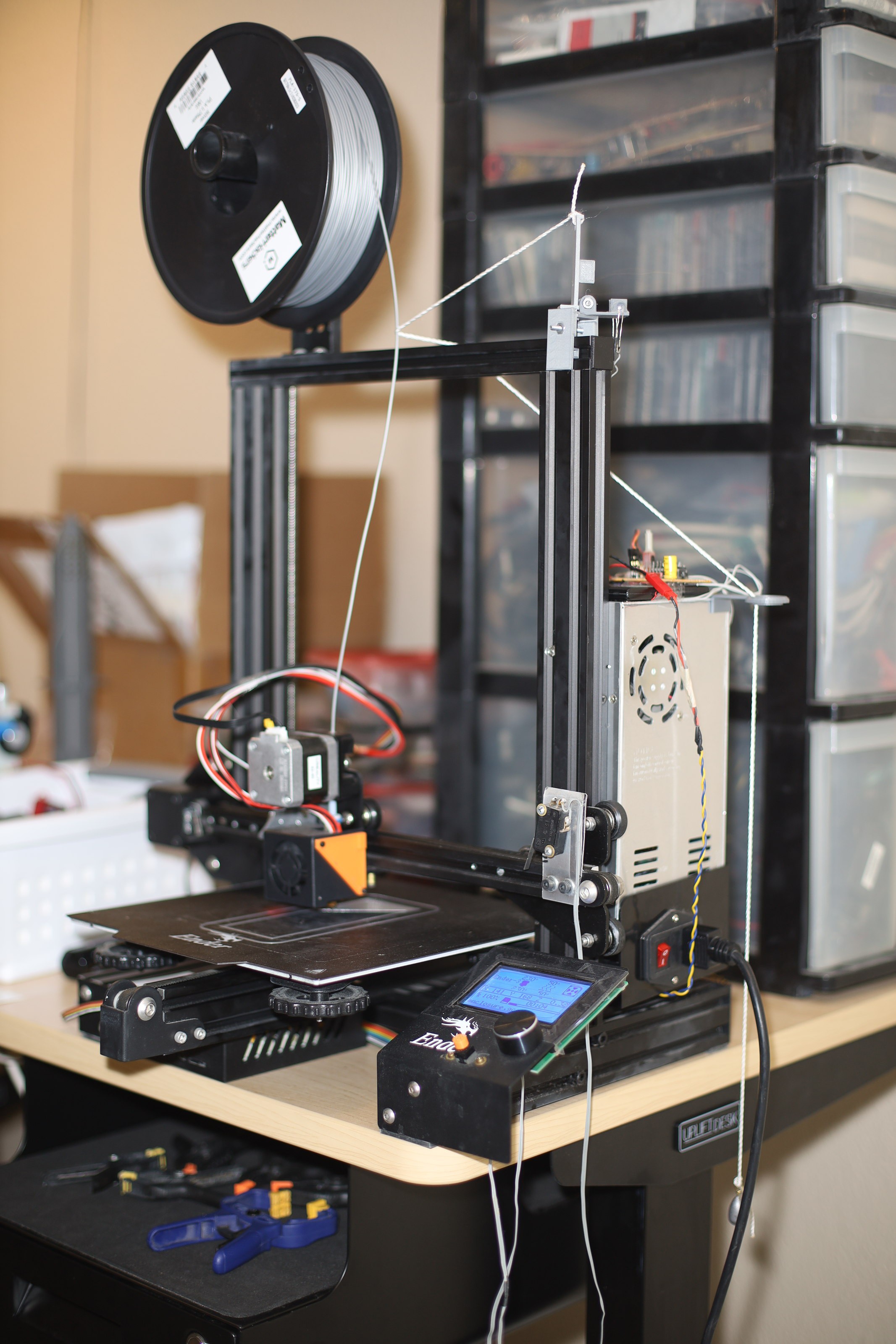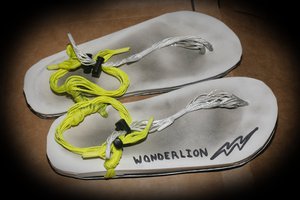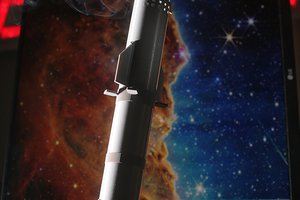Runout sensor for direct extruder
The internet has no good ideas
The internet has no good ideas
To make the experience fit your profile, pick a username and tell us what interests you.
We found and based on your interests.

Surprised a year after lions created the simple solution with string, the industry still sells elaborate systems of PTFE tubes & boundary switches. The Anycubic Kobra 2 has a long PTFE tube feeding filament to a direct extruder. It makes it a lot harder to start a new roll of filament. With a direct extruder, you have to pause the print, pull out the rest of the old filament, & put in the new filament. With the PTFE tube, you have to remove the PTFE tube to take out the last of the old filament.
The long awaited 1st runout happened. It wasn't as early as hoped, but was early enough to change filament. The string got frayed over the course of 1 roll, so it clung a lot longer than fishing line.


The runout sensor stuck to TPU a lot more than PLA, but it was still better than a bowden tube. The search is on for a less grippy string.
The alarm got a satin LED to try to make it more visible. Sanding down clear LEDs never ended well in the past. The problem is getting an even coating on the rounded surface. This one took a few hours. It would never be practical to sand more than 1.

The journey began with extracting another 5V from the ancient board. DP2 & C50 were the winners this time. DP2 was the pain in the ass diode which powered the board from USB. 24V is not an easy voltage to regulate down to 5V.
Then came the search for more loudness without adding an amplifier chip. The winner was a 25 year old metronome, bought down in the back rooms of the HFAC after the lion kingdom left its previous metronome in the band room. Somehow the combination of the large driver & resonant cavity made it extremely loud in the desired pitch range. Today, you'd think nothing of such a simple buzzer or a phone app.
This was actually a simplified metronome compared to one sold 5 years earlier for a lot less money. Sadly, can't remember the features which were taken out.
The internet shows 2 cover designs with exactly the same functions.
The only way in was a headphone connector which no-one ever used.
Circuit diagram. This was 1 of the PIC's with a bad MCLR pin. It needed at least a 5k pullup instead of 10k.
Photo interrupter design. It needs a smooth side facing the string, to prevent jams.
String routing has plenty of places for jams. There are also plenty of ways for the wires to snare the gantry.
The LED was a fail. You're going to see the empty filament roll before the LED. It really needs a 100W lightbulb retooled for 24V. The scotch tape menagerie could use a big 3D printed enclosure.
The lion kingdom would have to print like mad for this to be used just once before next year. Lions just don't make enough after rent to make a lot of prints. The mane idea now is testing the string behavior in its normal range of motion, over many prints.
The decision was made to require the printer to be on the edge of the desk & let the string hang. There's enough clearance from the bed movement for an animal to get in & change filament without moving the printer.
A simple structure routed the string. Detecting the runout ended up requiring just a simple lever. The string system ended up vastly simpler than anything else.
The switch was an instant fail. Not enough pressure to reliably press it, so in went the photo interrupter.
Since the raised platform proved itself to be reasonably stable, the switch idea came back in favor. If the switch was on a flexible arm at center roll level, it wouldn't have gimbal lock. It wouldn't reduce the build area height. The deflection would only be the cross section of the roll. It's a lot simpler than string.
The leading idea was a photo interrupter like the prusa to reduce friction. The leading phototransistor goes from 1k on to 100k off. They're obviously designed to use 10k resistors.
The mane problem with fabricating fork structures is the supports.
But there is a way to cut them out by melting them in half.
Then cutting them out with the xacto.
The latest fork structure was on the way to reaching the full range.
But there was still a missing degree of freedom. The photo interrupter would have to be a flat disc which detected interruption anywhere in the disc. There are cameras which can probably do the job. The string idea still had the lead in simplicity.
Any magnet in the middle of the string was quickly busted. It either fell down when the extruder moved towards it, it moved out of position, or it caused the string to jam.
Measuring the height of the the end of the string was the next easiest idea. It can't use a magnet because then it would stick to the printer. Another candidate for replacing the magnet is a short focal length mouse camera pointed at the known path of the string.
There are notes for using a mouse camera, though it can be expensive if you don't already have a spare mouse. A webcam might be better.
http://spritesmods.com/?art=mouseeye
A photointerrupter might detect the weight. These just can't use edge detection to overcome ambient light.
The big problem became tensioning the string. The end of the string has to move a lot more than the height of the printer. The printer can't always be on the edge of a table, but it's almost a requirement for a decent runout sensor. To overcome this problem, the string could be raised 10" above the printer on a dowel but it would wobble & require a large structure. A test of raised string showed a lot more friction, since the string has to bend down.
This actually works. At this elevation, the filament only moves in the confines of its roll. The assembly just needs round edges to reduce the friction.
Routing the string requires some complex structures on its own. Even putting it in a tube creates too much friction. A differential pulley would increase the friction.
The most robust solution is a sensored brushless motor exerting constant tension but it's expensive. A brushed motor would wear out. Motorized tension couldn't use a photointerrupter & would most certainly have to use a webcam.
From experience, PLA is going to chew up any stationary string or switch contacting it. That's why any commercial runout sensor has rollers contacting the PLA. It could only be used when the roll is nearly empty.
Prusa, the gold standard, has a low profile photo interrupter on top of the extruder. The trick is it's real close to the end & it adds another 4 wires. It only has enough lead time to stop the print. The user can't splice in another roll. There could be a wireless sensor powered by the bed leveler. The bed leveler, nozzle fan, & heater should use the same power lines.
So then there was the idea of a lightly weighted string winding its way up the side of the printer, around a roller, around the filament, around the roller & down the side of the printer. When the filament ran out, the string would fall out of the roller. The trick is detecting when the string fell out of the roller. The leading candidate was the lion kingdom's favorite sensor: the magnet + hall effect sensor.
This had several problems. The string tends to jam during normal printing. The magnet doesn't stay in position during normal printing. The magnet doesn't always fall down when filament runs out. The mane thing it's trying to overcome is the need for the string to travel to a wide variety of angles. It's accepted that any kind of runout sensor is going to make loading filament like loading an IMAX projector.
The idea is conceptually simple. A runout sensor is just a lever switch pressed on filament in a constrained path. When the filament runs out, it makes noise or turns off the printer. The problem is mounting the runout sensor where it doesn't interfere with the filament.
They're usually mounted on a bowden extruder because the bowden doesn't move. The problem is mounting them on a direct extruder. If it's mounted on the extruder, it's heavy & reduces the vertical clearance. The 1st attempt around this was an arm which moved in 2 dimensions but not up & down. It could follow the extruder horizontally but not vertically.
When the nozzle got high enough, there were gimbal locks & bending filament. Some requirements are for the filament to not bend & the print area to be at least 220mm high.
Because of the variety of nozzle positions, the sensor would have to not only move horizontally but rotate. It almost requires a robot. It became clear that the conventional lever switch wouldn't do for a direct extruder.
Create an account to leave a comment. Already have an account? Log In.
Become a member to follow this project and never miss any updates

 lion mclionhead
lion mclionhead

